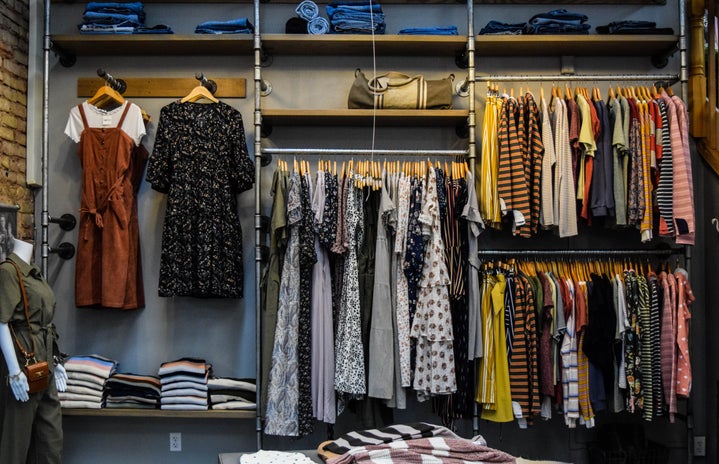“New Vogue”
Much like many others my age, I used to adore reading Vogue. In my school years I’d buy it every single month and I’d line each issue up along my windowsill – I’d be lying if I said I didn’t think it made me very cool, and the rows upon rows of multi-coloured binds were so aesthetically pleasing. However, since coming to university I’ve had the realisation that I was simply buying the magazine so I could add it to my collection. I’ve purchased the odd issue here and there, but for the most part, I haven’t read the magazine in years.
Why? To me, it just wasn’t the same anymore. I grew up reading magazines (Mizz and Girl Talk anyone?) and after growing out of the usual teen-aimed spreads, I progressed onto Vogue. I loved the beautiful images, the features about places and things fifteen-year-old me could only ever dream of seeing, doing, or wearing. I don’t think I ever felt intimidated by it, more a sense of lust, and in a way, inspired. However, to me, it got stale and same-y and didn’t really feel overly forward or innovative anymore, and the covers so rarely seemed to grab my attention. It’s only now hearing a very similar sentiment echoed by others that I realise that so many of us had totally lost interest in Vogue. Read ex-Editor in Chief Alexandra Schulamn’s interview in The Guardian if you want a sense of perhaps why the magazine went downhill. In short, she has absolutely no problem with the lack of diversity in the magazine, and openly admits that she did nothing to encourage any sort of diversity amongst her employees or choice of models.
That was all about to change though with Edward Enninful’s ‘New Vogue’. Enninful is British Vogue’s first black and first male editor. Unsurprisingly, the November issue has been the most circulated in a long while and just one look at the cover and you can see why – it’s beautiful. Adwoa Aboah, the cover model, is mixed race and a feminist activist. Enninful’s aim is very clear from the start, merging fashion with politics, culture, and a sense of diversity that the magazine so desperately lacked. The cover does not feature the usual selection of trends or “What your handbag says about you!” and instead lists the range of actors, models, and even politicians featured.
Inside, there are still your high-end campaigns and fashion items that cost more than our yearly SAAS, but it’s different. There’s an advert for Primark and a Topshop skirt, but next to a nearly £4,000 Celine bag, of course. Naomi Campbell features but interviewing Sadiq Khan, and a conversation with Victoria Beckham, but interviewed in her childhood bedroom. It’s the same, but it’s different. A lot more real, bold, diverse, and for the masses while still maintaining an element of luxe and high-end.
If you’re a total beauty geek like me, you’ll probably already know that Pat McGrath has been appointed editor-at-large, with Charlotte Tilbury, Sam McKnight, and Val Garland joining the ranks as contributing editors. Fashion wise, there’s Kate Moss, Naomi Campbell, Grace Coddington, and Steve McQueen. It’s quite the team.
I think New Vogue sounds very promising indeed. Who knows, perhaps my room will be filled with piles of issues once more?
Image: Steven Meisel, Vogue, 2017.

